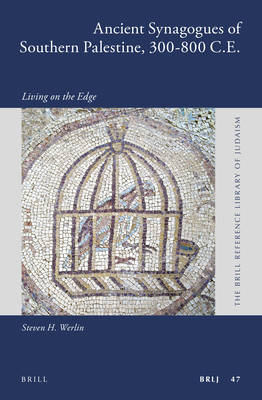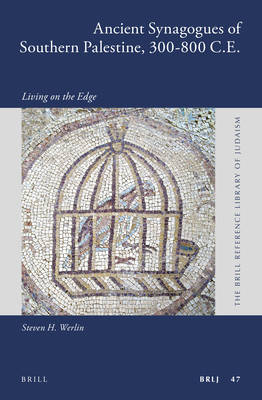
- Afhalen na 1 uur in een winkel met voorraad
- Gratis thuislevering in België vanaf € 30
- Ruim aanbod met 7 miljoen producten
- Afhalen na 1 uur in een winkel met voorraad
- Gratis thuislevering in België vanaf € 30
- Ruim aanbod met 7 miljoen producten
Zoeken
€ 363,45
+ 726 punten
Omschrijving
Following the failure of the Bar-Kokhba revolt in the second century, the majority of the Jewish population of Palestine migrated northward away from Jerusalem to join the communities of Jews in Galilee and the Golan Heights. Although rabbinic sources indicate that from the second century onward the demographic center of Jewish Palestine was in Galilee, archaeological evidence of Jewish communities is found in the southern part of the country as well.
In The Ancient Synagogues of Southern Palestine, 300-800 C.E., Steve Werlin considers ten synagogues uncovered in southern Palestine. Through an in-depth analysis of the art, architecture, epigraphy, and stratigraphy, the author demonstrates how monumental, religious structures provide critical insight into the lives of those who were strangers among Christians and Muslims in their ancestral homeland.
In The Ancient Synagogues of Southern Palestine, 300-800 C.E., Steve Werlin considers ten synagogues uncovered in southern Palestine. Through an in-depth analysis of the art, architecture, epigraphy, and stratigraphy, the author demonstrates how monumental, religious structures provide critical insight into the lives of those who were strangers among Christians and Muslims in their ancestral homeland.
Specificaties
Betrokkenen
- Auteur(s):
- Uitgeverij:
Inhoud
- Aantal bladzijden:
- 532
- Taal:
- Engels
- Reeks:
- Reeksnummer:
- nr. 47
Eigenschappen
- Productcode (EAN):
- 9789004298392
- Verschijningsdatum:
- 7/08/2015
- Uitvoering:
- Hardcover
- Formaat:
- Genaaid
- Afmetingen:
- 163 mm x 241 mm
- Gewicht:
- 907 g

Alleen bij Standaard Boekhandel
+ 726 punten op je klantenkaart van Standaard Boekhandel
Beoordelingen
We publiceren alleen reviews die voldoen aan de voorwaarden voor reviews. Bekijk onze voorwaarden voor reviews.











